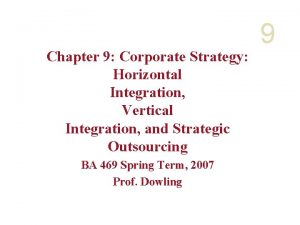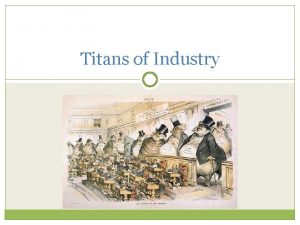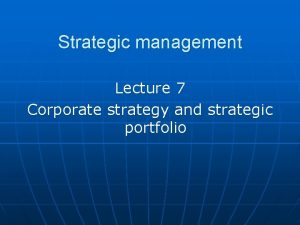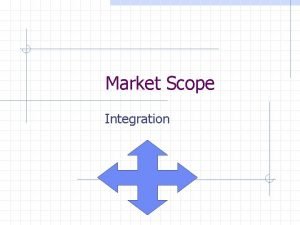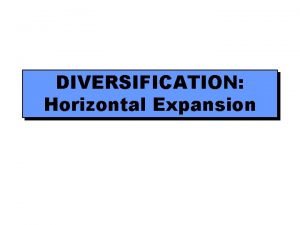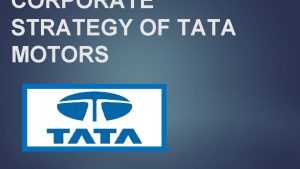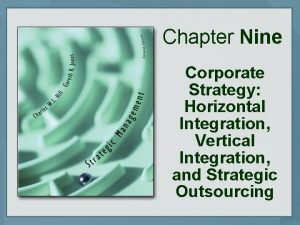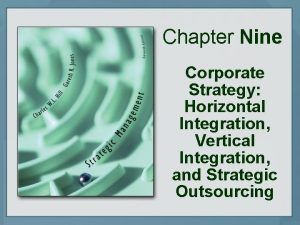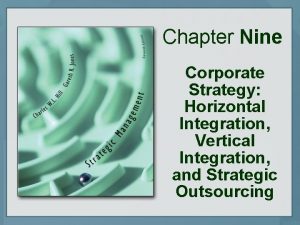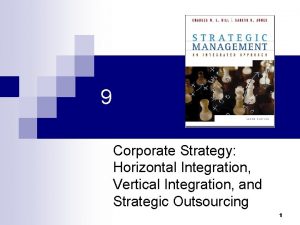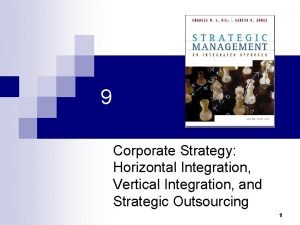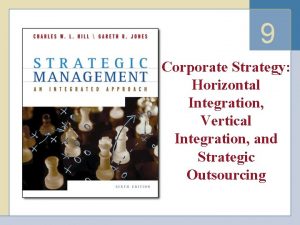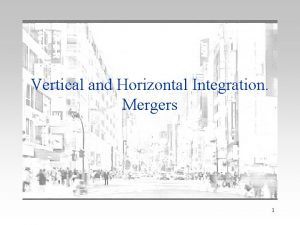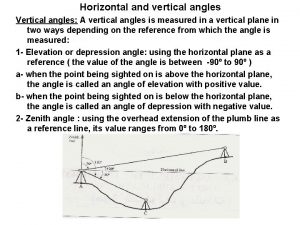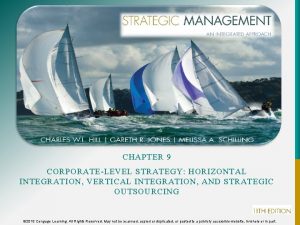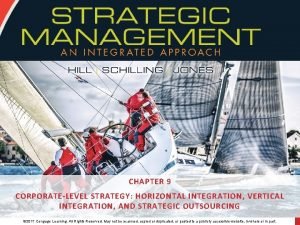Chapter 9 Corporate Strategy Horizontal Integration Vertical Integration













- Slides: 13

Chapter 9: Corporate Strategy: Horizontal Integration, Vertical Integration, and Strategic Outsourcing BA 469 Spring Term, 2007 Prof. Dowling 9

Overview • Horizontal integration – The process of acquiring or merging with industry competitors • Acquisition and merger • Vertical integration – Expanding operations backward into an industry that produces inputs for the company or forward into an industry that distributes the company’s products • Strategic outsourcing – Letting some value creation activities within a business be performed by an independent entity 2

Benefits of Horizontal Integration • Reducing costs • Increasing value – Product bundling – Cross selling • Managing industry rivalry • Increasing bargaining power – Market power (monopoly power) 3

Drawbacks and Limits of Horizontal Integration • Majority of mergers and acquisitions do not create value • Implementing a horizontal integration strategy is not easy • Mergers and acquisitions often fail to produce the anticipated gains • Can bring the company into conflict with antitrust law 4

Vertical Integration: Stages in the Raw Material to Consumer Value Chain 5

The Raw Material to Consumer Value Chain in the Personal Computer Industry 6

Full and Taper Integration 7

Increasing Profitability Through Vertical Integration • • Building barriers to entry Facilitating investments in specialized assets Protecting product quality Improved scheduling 8

Arguments Against Vertical Integration • Cost disadvantages – Company-owned suppliers that have higher costs than external suppliers • Rapid technological change – Tying a company to an obsolescent technology • Demand unpredictability – Difficulty of achieving close coordination among vertically integrated activities • Bureaucratic costs 9

Alternatives to Vertical Integration: Cooperative Relationships • Short-term contracts and competitive bidding • Strategic alliances and long-term contracting • Building long-term cooperative relationships – Hostage taking – Credible commitments – Maintaining market discipline • Parallel sourcing policy 10

Strategic Outsourcing of Primary Value Creation Functions 11

Benefits of Outsourcing • Reducing costs – The specialist company is less than what it would cost to perform the activity internally • Differentiation – The quality of the activity performed by the specialist is greater than if the activity were performed by the company • Focus – Distractions are removed; the company can focus attention and resources on activities important for value creation and competitive advantage 12

Identifying and Managing the Risks of Outsourcing • Holdup – The company can become too dependent on the provider of the outsourced activity so that the provider can raise prices • Scheduling of activities – Loss of control can result in distorted signals in the supply chain • Loss of information – Contact with the customer may be lost 13
 Tapered integration strategy
Tapered integration strategy Corporate strategy vs business strategy
Corporate strategy vs business strategy Directional strategy in strategic management
Directional strategy in strategic management Define horizontal integration
Define horizontal integration Vertical and horizontal integration worksheet
Vertical and horizontal integration worksheet Cornelius vanderbilt vertical or horizontal integration
Cornelius vanderbilt vertical or horizontal integration Objective of corporate governance
Objective of corporate governance Organizational strategy types
Organizational strategy types What is corporate strategy in strategic management
What is corporate strategy in strategic management Business vs corporate strategy
Business vs corporate strategy What is corporate scope
What is corporate scope Hr-strategy map
Hr-strategy map Horizontal diversification
Horizontal diversification Corporate strategy of tata motors
Corporate strategy of tata motors
